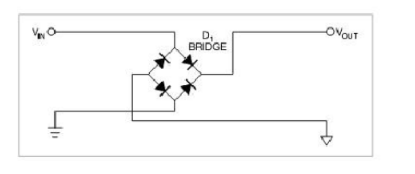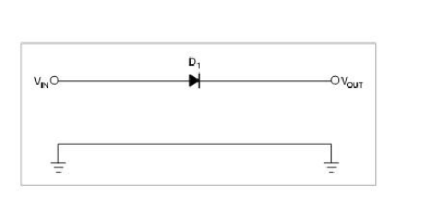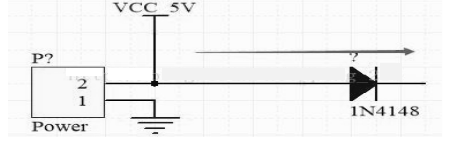Reverse connection protection circuit:
Generally, in order to prevent the user from connecting the positive and negative poles, the interface of the electronic product needs anti-reverse protection. For example, the interface is made into a trapezoid or a gap, if it is reversed, it will not be easy to insert it, but because we don't know the product user is male or female, in the end, these anti-reverse designs will be destroyed and inserted by the user with brute force. For some industrial control products, only the way of connecting terminals is provided. Although the positive and negative poles are marked on the outer casing and the terminal, but some careless users will still reverse the protection circuit.
Therefore, it is necessary to use a reverse power protection circuit.
Anti-reverse protection circuit
1. The input can be rectified with a diode bridge so that the circuit will always have the correct polarity (Figure 1). The disadvantage of these solutions is that the voltage drop across the diode consumes energy. When the input current is 2A, the circuit in Figure 1 consumes 1.4W, and the power consumption of the circuit in Figure 1 is 2.8W.

Figure 1 is a bridge rectifierthat works fine regardless of polarity, but with two diodes turned on, the power consumption is twice that of Figure 1.
2. DC power input anti-reverse protection circuit can use the unidirectional conductivity of the diode to achieve anti-reverse protection. As shown in Figure 2 below:
This connection is simple and reliable, but the power consumption is very large when a large current is input. With the inputcurrent rating up to 2A, if Onsemi's fast recovery diode MUR3020PT is used, the rated tube voltage drop is 0.7V, then the power consumption must be at least: Pd=2A×0.7V=1.4W, so the efficiency is low and the heat is large, to add a radiator.

Figure 2. A series diode protection system is unaffected by reverse polarity. The diode has a voltage drop of 0.7V.
The product will consider the problem of “reverse connection protection” when designing. The customer simply uses the plug to connect the power supply. Therefore, if the connection is reversed, the circuit will be short-circuited, causing the circuit to burn and cause unnecessary loss.
1) Reverse-protection is performed by using the unidirectional conductivity of the diode, and the diode is turned off when the connection is reversed;
2) Using a reverse-inserted joint, this is a simple, low-cost and effective method.



没有评论:
发表评论